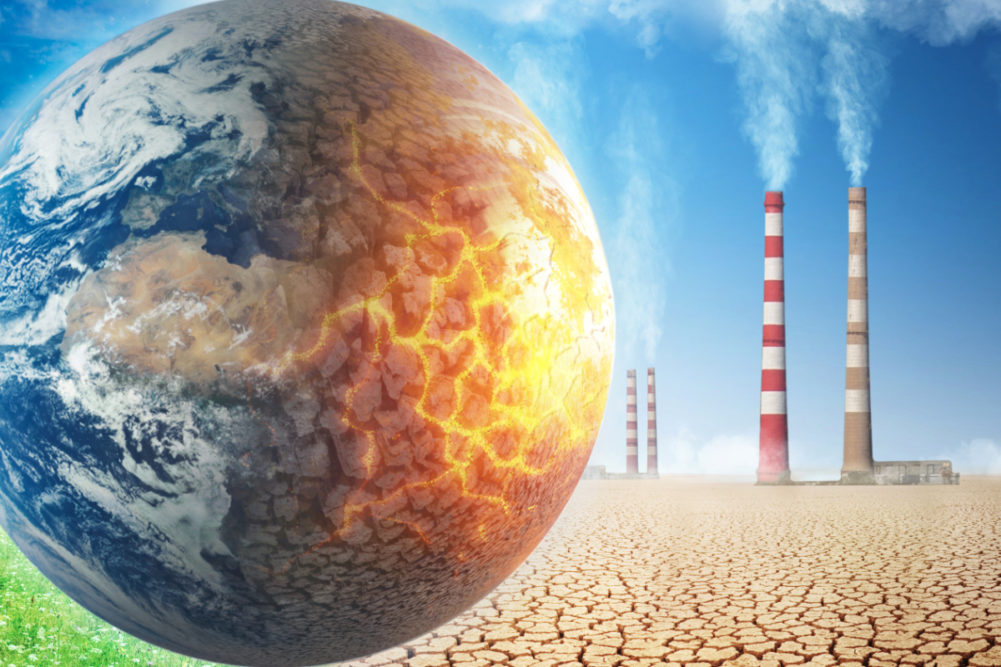
Located in the South Pacific, Tuvalu is an island country. The small nation was once inhabited originally by Polynesians. The islands were colonized by migrants from the South Pacific between the 14th to 17th century. Tuvaluans lived in scattered villages, with an estimated population of 3,000. The majority of inhabitants were descendants from migrants.
In the 18th century, Europeans began to explore the area. A Spanish navigator named Clvaro de Menda-a de Neyra made the first European visit to Tuvalu. Europeans began to forcibly hire plantation workers for the islands shortly after their discovery. Many of the people were taken and forced to work on plantations. Some others fled to Gilbert Islands.

Tuvalu was a British protectorate until 1978, when it became independent. Today, Tuvaluans comprise the majority of the population. It also has a significant number of residents from other Pacific ethnicities. Those who are of other Pacific ethnic groups often marry Tuvaluans.
Tuvalu's economic priority is to develop the economy without any foreign assistance. Nearly 20 percent of workers are employed by the government. Tuvalu's economy may be small, but the country has never faced a strike or an economic crisis.
Tuvalu is a member UPU, UN and ACP Group. It is also a member UNESCO, IMO. FAO. UNIDO, UNIDO, UNIDO, and Asian Development Bank. The government takes part in global efforts to stop pollution and reduce global warming. The Tuvalu government has been urging industrialized countries to ratify the Kyoto Protocol.
Tuvalu's economy is based on fishing, agriculture, and subsistence farming. Copra is Tuvalu's only major cash crop. Arable land in the area is limited because of its poor soil. However, farmers are able to sell some of their produce, and some manufacture is available for export. 25 percent of GDP can be attributed to agricultural products.

The Tuvalu government has implemented many reforms since 1986. Population has grown. The United Nations reports that Tuvalu's population was 10,000 in 2005. This number is projected to rise to around 14,000 in 2025. Around 6,000 Tuvaluans over 65 are considered to be elderly.
Tuvalu has no official political parties. Instead, the local parliament is composed of 12 members, most of whom align into different factions. The Tuvaluan constitution permits separation of state and church, as opposed to most Polynesian political systems. Religious organizations also need to register with the government.
Tuvalu Amateur Athletic Association, Boy Scouts, Girl Guides and Girl Scouts are three of the most important organizations in Tuvalu. The Tuvalu Youth Fellowship (Pathfinders) and the Tuvalu Youth Fellowship are other youth groups. Secondary school graduates may be eligible to study at tertiary colleges abroad.
While the Tuvaluan government has no authority to silence or censor media, they do have some restrictions regarding speech. While the law protects the press, the government doesn't have a television network or a commercial newspaper. Local news is transmitted in Tuvaluan by the Tuvalu Broadcasting Service. Internet access is also available through the Office of the Prime Minister and the Department of Telecommunications.
FAQ
What is the role of the energy sector in climate change and how can it be addressed?
It is crucial that the energy sector plays a significant role in climate change. The burning of fossil fuels is a primary source of global warming, caused by releasing carbon dioxide into the atmosphere, trapping heat, and leading to an increase in average temperatures on Earth.
This is why energy sources need to shift away from carbon-emitting resources like coal and natural gas and instead switch towards renewable energy sources such as solar, wind and geothermal. This shift can be implemented not only through government policy and incentives but also through investments in innovative technology such as hydrogen fuel cells. By investing in infrastructure that supports the use of these renewable sources, businesses and households can drive down emissions while simultaneously reducing their electricity bills.
Other ways include switching from polluting transportation options such as petrol-fueled cars to moving towards electric or public transport. Governments can help lead society's transition from oil-based infrastructures to cleaner alternatives by funding research into battery technologies and encouraging consumers to make investments in cleaner modes.
Green business practices are essential to help reduce carbon emissions. Companies should implement better insulation systems in their offices, and energy efficiency plans in production facilities. This can reduce operational costs dramatically while improving environmental performance metrics.
To be effective, these initiatives need to be supported at both the company and government levels. For example, increasing taxes on polluting products encourages people to change their ways without making them more financially competitive with polluters. Providing vouchers or subsidies to low-carbon products will help create a market that supports sustainability efforts. To sum up, combating climate change will require a huge effort by both the private sector and the public. Switching to renewable energy sources and adopting sustainable practices are key elements to ensuring that future generations are impacted positively.
What is the role of individuals and communities in addressing climate change?
Climate change is one the most pressing contemporary issues we are facing today. It affects all of us and requires our collective attention as well as individual actions to make a real difference.
Individuals can play an important role in addressing climate change. Everyday behaviors can include anything from reducing waste and consuming consciously, going through changes in lifestyle such as switching to a vegetarian diet, consuming less meat, using public transportation more often, and choosing more sustainable materials in clothing and home decor. They can also get involved in political advocacy to promote sustainability-related initiatives in their community.
It is important that communities are involved in the larger climate change effort. They can create policies that reduce greenhouse gas emissions by encouraging electric or bicycle transport, deforestation reductions, and the promotion of composting. This mission requires collaboration between communities in different cities and countries.
This will help individuals become aware of the issues at stake and understand how to contribute positively to tackling them. This will help people become more aware about the issues and to understand how they relate to others who are also affected by global climate change.
Employers ultimately have a major role in fighting climate change. Implementing corporate practices that focus on sustainability and opting to use green alternatives whenever possible will yield both sociologically and economically positive results.
The collective efforts of individuals, communities and businesses will all play a significant role in addressing global warming and defending humanity from the long-term effects of climate change.
What are some of the solutions proposed to climate change? How effective are they?
Climate change is a critical issue of our time, and requires the urgent attention of governments, businesses, citizens, and all other stakeholders. An unstable climate system can be seen in rising temperatures, extreme events, high sea levels, and melting of polar ice. To attempt to tackle this phenomenon, multiple proposed solutions have been put forward ranging from technological solutions, and behavioral changes to geoengineering.
Technological Solutions: An array of solutions have arisen to address climate change through changes in technology. These solutions include renewable energy sources like wind and solar power, which are reliable sources of clean energy without causing any adverse effects on the environment. Electric cars using renewable energy are a great alternative to petrol vehicles. They can reduce urban air pollution significantly. Another technological solution is reforestation projects, which aim to increase carbon sequestration and soil.
Behavioral changes: Small adjustments to existing routines can make big differences in reducing emissions. This will help limit future climate disruption. So, for example, buying locally-produced goods reduces the transport costs associated with food transport. The use of public or active transportation, as well as reducing cost and air polluting simultaneously, is a good option. In the same way, better insulation in your home can help reduce dependence on gas boilers that heat your homes.
Geo-engineering: Geo-engineering involves large-scale interventions in natural systems deemed too risky due to potentially unforeseen consequences -- including widespread crop failure or depletion in fish populations - though thought to be worth researching nonetheless due to its potential efficacy at dealing with the problem more quickly than behavior alone may allow for human activity would need to rapidly balance current CO2 levels via some possible mechanisms such as using Sulfates aerosol injection into Earth's stratosphere - blocking sunlight before it reaches the Earth's surface - brightening clouds above them so they reflect more light back into space or removing Carbon dioxide directly out of the atmosphere through bioenergy capture storage systems coupled with Carbon Capture Storage (BECCPS).
The effectiveness and efficiency of these solutions will depend on how many producers invest in green alternatives. However, incentives such as electric Cars play an integral part in incentivizing alternative solutions. Other than increasing consumer awareness about their utility over time, it is possible to mandate alternative solutions via policies measures. This requires regulatory bodies that are willing to engage players further. Although nontechnological approaches can work at one level; solving the global warming problem requires all parties.
Statistics
- features Earth's average surface temperature in 2022 tied with 2015 as the fifth warmest on record, according to an analysis by NASA. (climate.nasa.gov)
- Indigenous peoples and local communities receive less than 1% of all climate funding despite scoring wins for people and nature Africa's broken food markets must be fixed to tackle hunger (climatechangenews.com)
- Fossil fuel production must decline by roughly 6 percent per year between 2020 and 2030. (un.org)
- According to the 2014 report on Climate Change Impacts, Adaptation, and Vulnerability (page 8) from the United Nations Intergovernmental Panel on Climate Change, governments at various levels are also getting better at adaptation. (climate.nasa.gov)
- The 100 least-emitting countries generate 3 per cent of total emissions. (un.org)
External Links
How To
How to Educate Your Community About Climate Change and Mobilize Action
There are many ways to learn about climate change education, including online resources and interactive tools, classroom activities, simulations and experiential learning programs. These are the key components of climate change education.
-
The goal is to provide practical knowledge and skills for the people who are interested in this subject.
-
Showing how individuals can make an impact
-
Participating in an open dialogue regarding potential solutions
-
Sharing experiences can inspire action
Teachers will be able help their communities reduce their environmental footprint by providing comprehensive lessons on climate change for students and adults.
A unique way to engage people in meaningful dialog is to link scientific research with real world examples. Participants can also witness positive outcomes from case studies and best practice, which can be used to inspire innovation and replicateable measures in their communities.
Participants will be able to use their mental skills, such as petition-writing, campaign creation, or local action, to help them become social and political agents or sustainably improvement advocates. In addition, individual agency emphasizes the importance of participating in reducing emissions. It also shows participants' collective contributions to a greater outcome. Involving stakeholders early in the decision-making process encourages them to be involved. This could lead to more equitable outcomes for all those affected by policy design decisions. By combining our efforts to raise public awareness about the impact of climate change with appropriate actions to mitigate greenhouse gas emissions, we may be able create an environment in which these urgent matters are addressed with special attention where it is most needed. This will allow us to work together to implement successful measures that will help us achieve our collective goals.